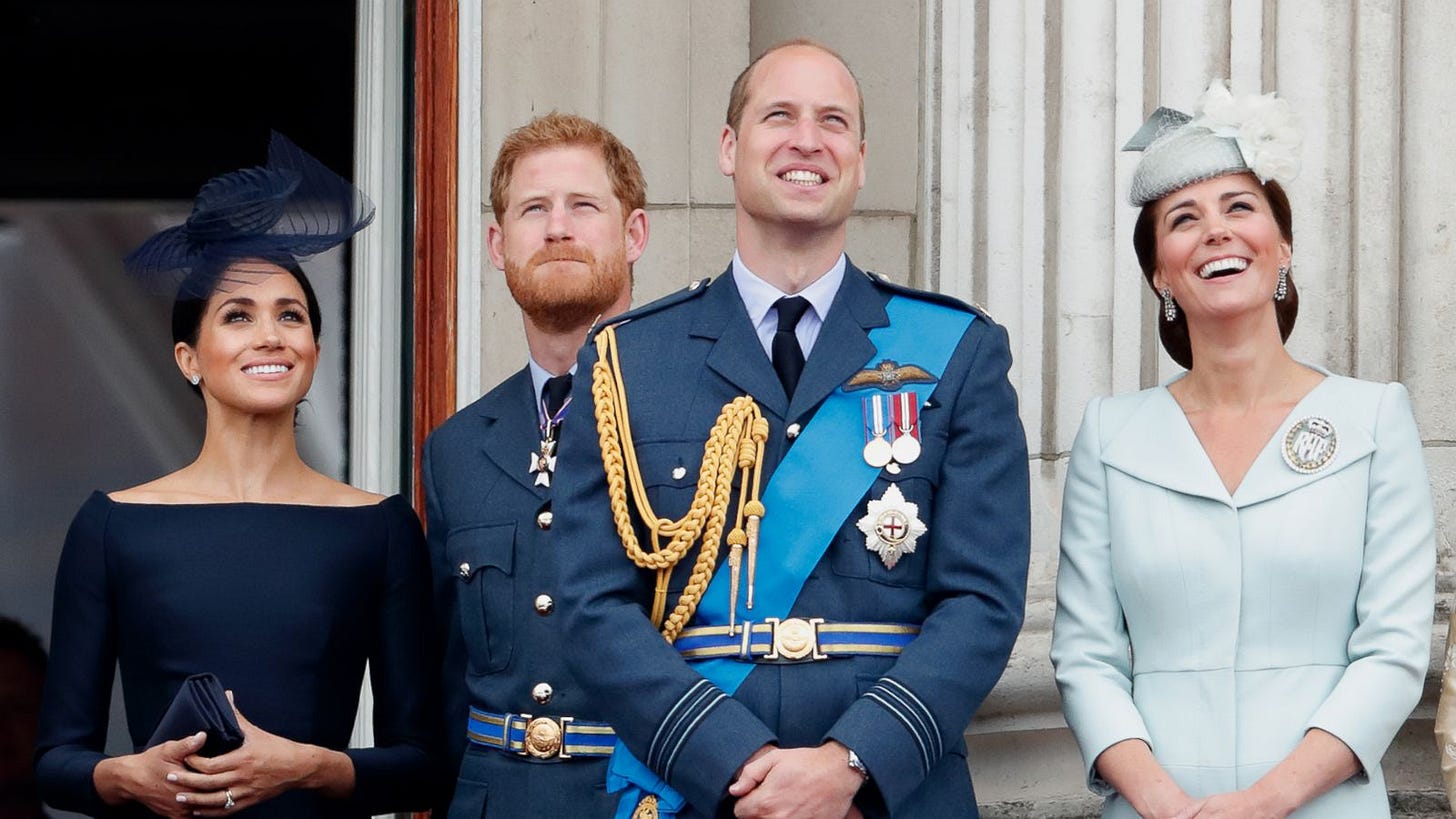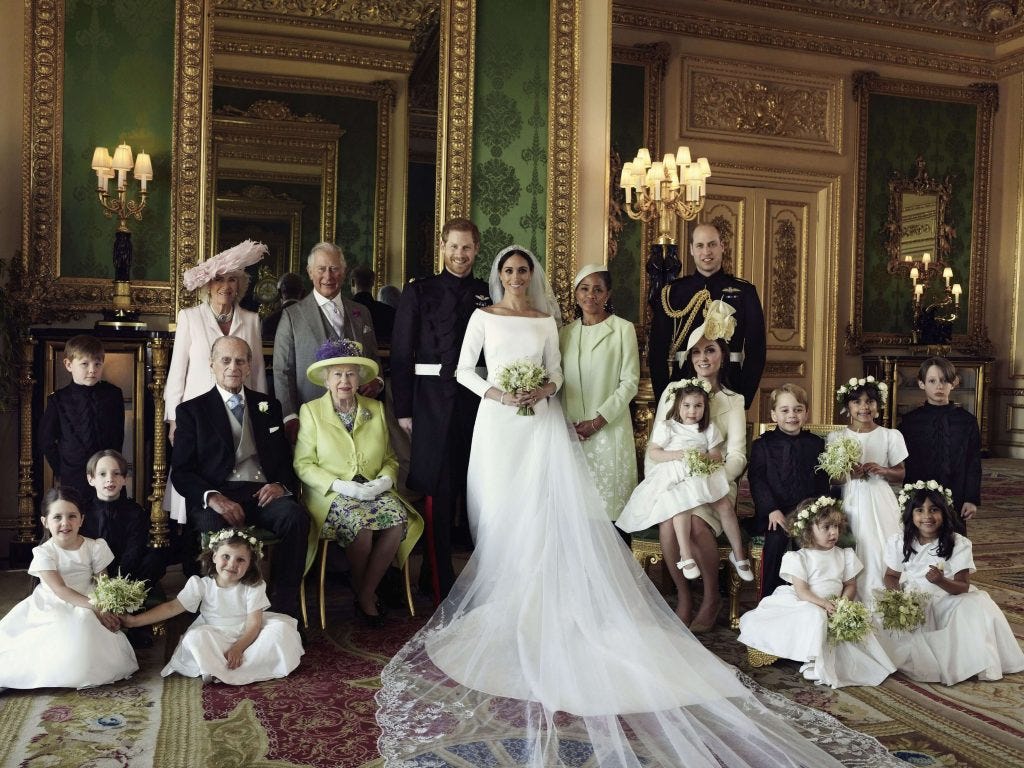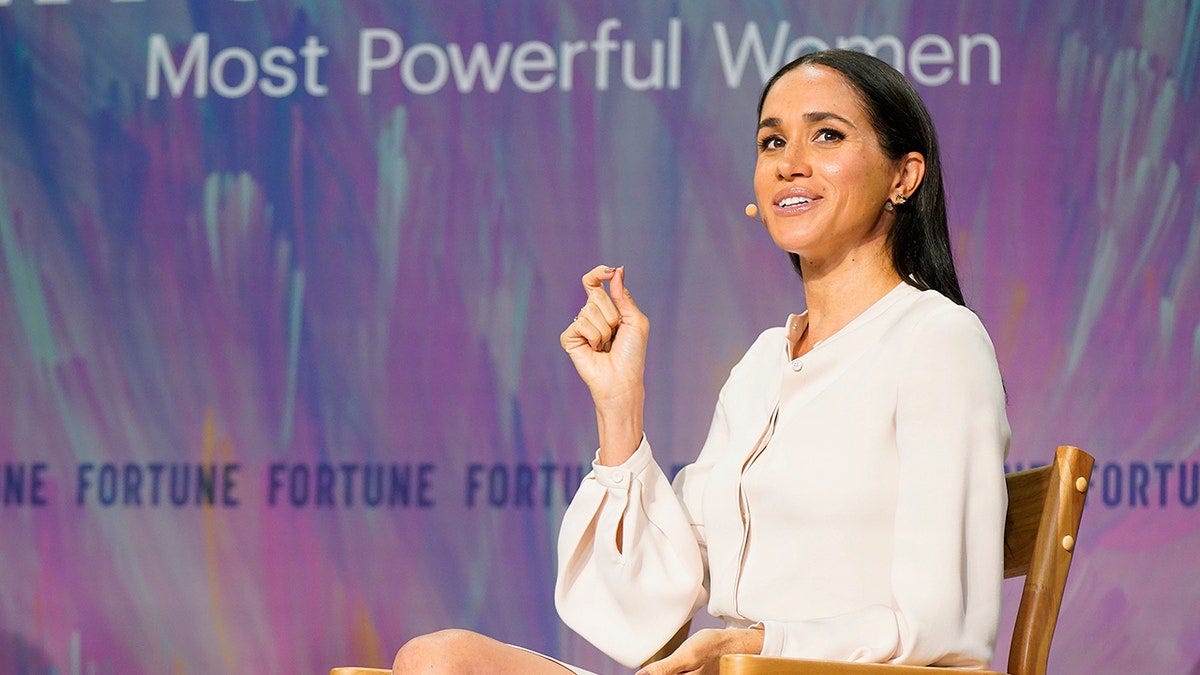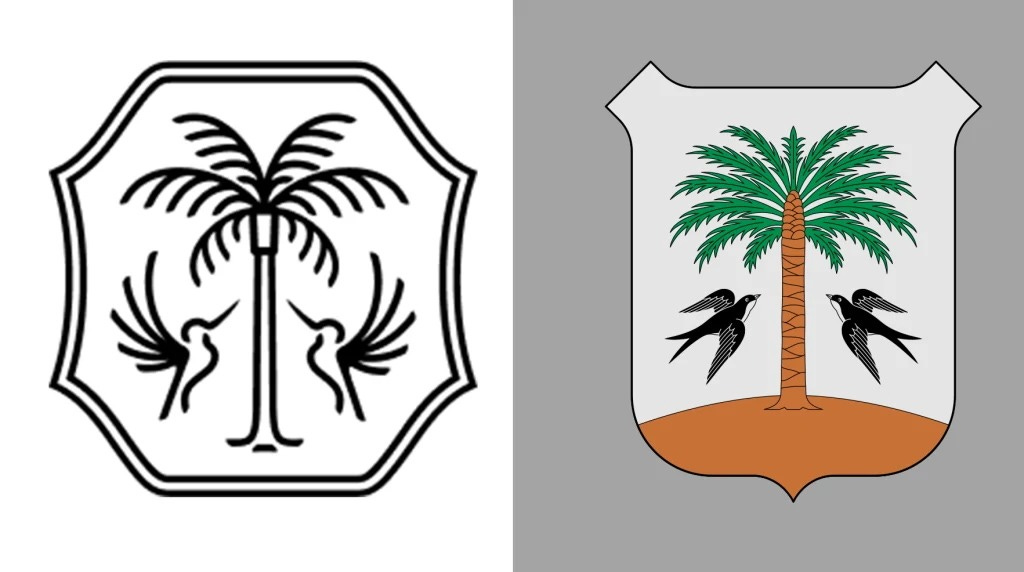When I coined the phrase OpenVerse, I wasn’t talking about giant IP machines or top-down fandoms. I meant the informal communities that already exist—loyal, passionate, self-sustaining—but fragmented and under-monetized. And the pattern is clear: once you harness an OpenVerse, it doesn’t just live online—it spills into gatherings, festivals, and conventions, where fans embody their collective identity. That’s when the economic flywheel kicks in.
Which is why I lit up when my friend, producer Meta Valentic, called me with an obsession she couldn’t shake. She saw the biggest untapped OpenVerse hiding in plain sight: the Royals. The British Monarchy already functions like a global soap opera, feeding millions of fans and critics across books, podcasts, tabloids, TikTok, and prestige TV.
But as Meta put it, this Royal ecosystem is “a convention waiting to happen”—a cultural crown jewel no one has yet fully organized, monetized, or scaled.
What follows is Meta’s deep dive: first, a case study on Meghan Markle’s creator-led build—a modern princess who turned her personal story into a brand—and then a thought exercise on the much larger opportunity it points to: the Royal family as a full-fledged OpenVerse, waiting to be captured.
Take it away, Meta…
During the 2016 presidential race, I turned away from the mainstream news. Too depressing, too chaotic, too filled with bad actors. In an auspicious coincidence, The Crown premiered on Netflix four days before election day. I needed a place to put my attention and curiosity, and the British Royal Family became the perfect escape. Soon, I was enmeshed in historical biographies, documentaries, thinly veiled romances, Instagram influencers, and all six seasons of The Crown. Meghan Markle’s unlikely journey from co-star of a basic cable drama to Duchess of Sussex only fueled my interest. The Windsors became my Kardashians, my guilty pleasure, my distraction from the real world, and over the years they never fail to disappoint.
In the last hundred or so years, the British Monarchy has given us:
Edward VIII abdicating the throne for Wallis Simpson. King George remaining in London during The Blitz. Charles and Diana’s wedding. Their tabloid fueled divorce. Princess Diana’s tragic death and the endless fascination and conspiracies that followed. Will and Kate’s romance and wedding. Their adorable kids. Harry and Meghan shaking up the Royal scene. Their official exit and estrangement from the family. The Oprah interview. Queen Elizabeth’s death. Kate “disappearing”. William and Harry’s feud. King Charles ruling while battling cancer.
There is no end to the drama surrounding the British Royal Family, and once you become hooked, you realize how many outlets Royal fans have to feed their obsession. Royal births, weddings, funerals, Jubilees, and Coronations are communal events that drive engagement, and create a not-so-micro economy. At the time of King Charles’s Coronation, the “Monarchy’s brand” was estimated to contribute approximately £3 billion to the British economy. In between milestone events, the Royal Family and the Palace machine willingly and unwillingly provide endless fodder for what I will call the Royal Economy.
Below is a very partial list of popular and successful Royal content:
The Crown (60 episodes, 87 Emmy nominations, 21 wins). In 2021, the show made history by sweeping all seven major drama categories at the 73rd Primetime Emmy Awards.
Popular books Red, White, and Royal Blue (and the accompanying movie), The Royal We series, American Royals series, and Royal Holiday successfully hook readers into fictional worlds inspired by the British Monarchy. Prince Harry’s memoir Spare holds the title of fastest selling non-fiction book of all time according to the Guinness Book of World Records.
Hallmark has an entire subgenre concentrated on Royal stories, and upped the ante by crossing those films with the Christmas craze: A Prince for Christmas, A Royal Christmas, Crown for Christmas, The Royal Nanny, My Christmas Prince, A Royal Corgi Christmas…I could go on.
Royal influencers are monetizing the Monarchy on Instagram, TikTok, and Substack: Tina Brown (53k Substack subscribers), Tom Sykes (60k Substack subscribers), Elizabeth Holmes (no, not that one!), Amanda Matta (1.4mil combined TikTok/IG followers).
YouTube: The Royal Family Channel (3.64 million subscribers), Roku: The British Royal Family app.
The British Royal Family fandom perfectly encapsulates an OpenVerse Community: a massively scaled, globally recognized, and intensely passionate cultural ecosystem that is untethered by a single creator or unifying owner.
It is a multi-generational, global obsession sustained not by the Monarchy itself, but by the relentless, often contradictory, output of secondary content consumed by millions. This fandom runs on deep roots and fragmented media rituals—from consuming hit shows like The Crown, reading the relentless tabloids’ blaring headlines, listening to podcasts, and following digital commentators and influencers.
The passion of the Royal OpenVerse community is monetized not only through Royal events but also through continuous, commercially successful media creation that feeds the fan base. The OpenVerse thrives on stories that explore the lives of the Royals, both historically and contemporaneously, ensuring consistent public fascination. This perpetual consumption proves the ecosystem is already alive and pulsing, waiting for someone to capture the energy and wallet share of the Royal Economy.
Note: anti-fan engagement and critics of the Monarchy drive the headlines and feed the ecosystem just as much as the circles of fans who love them. From Prince Andrew’s association with disgraced sex-trafficker Jeffrey Epstein to the infamous “Kate-Gate” disappearance of the Princess of Wales for for eight weeks in 2024 (she was revealed to have been seeking treatment for cancer), constant coverage and conversation (good or bad) keep the Windsors in the zeitgeist.
Case Study: Meghan Markle, The Duchess of Sussex
The rise of Meghan Markle’s lifestyle brand, As Ever, isn’t an example of an OpenVerse—it’s a creator-led build that exposes just how voracious and organized the Royal fandom already is.
Markle didn’t create the ecosystem; she revealed its scale. As an outsider who breached the walled royal garden, she turned the fantasy at the heart of every Hallmark movie—the commoner who becomes a princess—into a modern creator brand. As Ever, inspired by her Montecito home, currently sells jams, cookie mix, and wine as extensions of her Netflix series With Love, Meghan. More importantly, Netflix isn’t just her distributor but also her strategic partner and sole investor—a first-of-its-kind creator-led lifestyle venture built entirely under her creative vision rather than an existing franchise like Stranger Things.
Netflix Co-CEO Ted Sarandos understands Markle’s “incredible power and influence“ and moved to lock her into an exclusive business deal when the trailer for Netflix’s Harry & Meghan trailer first dropped. The $20 shoes Markle wore in the trailer, from a small village producer, sold out globally. Searches for the Hermès blanket featured prominently in the Sussex residence increased 500% the day the trailer was released.
Sarandos noted that the consumer products business requires a “great entertainment business” first. The success of the docuseries - Sarandos confirmed that Harry & Meghan was “one of the most-watched documentaries we’ve ever had” - created the perfect foundation for The Duchess’s launch into commerce.
The OpenVerse Flywheel: Content, Commerce, and Community
Content Spine: With Love, Meghan: The unscripted series (currently 2 seasons, 16 episodes) blends cooking, gardening, and entertaining, designed to add “joy into the everyday” (in Meghan’s words). The series presents Meghan Markle’s highbrow life as accessible, that anyone can elevate entertaining with her tips and tricks. The production design, lighting and music offer a warm, personal tone for Meghan and her guests. Season one reached Netflix’s global Top 10. The day With Love, Meghan premiered, Markle launched As Ever’s website and positioned her lifestyle brand as an extension of her world.
Commerce Spine: As Ever: The brand, launched in partnership with Netflix, features artisanal products like jam, teas, and crepe mix. The initial focus was on “mastige” (mass prestige), with nearly everything priced under $20, ensuring the brand was accessible to her audience. The brand is an extension of her personal taste, ensuring everything feels value-aligned. As Ever showcases the aesthetic Markle highlights in With Love, Meghan, so her audience stays enmeshed in her OpenVerse from content to commerce.
Community Purchase Activation: The inaugural launch of As Ever in April 2025 resulted in the initial hero product, a jar of jam, selling out in 44 minutes. A second seasonal drop, stocked at ten times the volume, also sold out within hours. As Ever’s debut rosé sold out in less than an hour on its initial drop on July 1, 2025. This demonstrates the community’s immediate willingness to show up and purchase goods within the Royal sphere. In terms of community, @meghan Instagram debuted on January 1, 2025, and had 4 million followers by July 2025. Markle launched her ShopMy storefront in conjunction with With Love, Meghan. The site caused a spike in affiliate brand sales, with one brand reporting sales increasing by 115% the day Markle’s ShopMy went live.
Branding and Scaling Challenges: The road to a top Netflix show and sell out merch drops has not always been smooth for Markle. Her first announcement branded her company “American Riviera Orchard”, but she scrapped that name because, as she explained in an Instagram video, she found that the title would limit her business to selling items that were manufactured and grown in the Santa Barbara area. After launching As Ever, she faced criticism for allegedly plagiarizing her logo from a Spanish town’s coat of arms.
The As Ever logo (left) and the Porreres coat of arms (right)
Soon after, two existing brands, As Ever clothing and As Ever Photography (name since changed) expressed surprise at Markle’s use of the same name, although no litigation followed.
As Ever’s demand explosion instantly put pressure on scaling, transitioning the conversation from selling a few thousand jars to needing a purchase order for over a million units in just a few months. The quick sellouts, while proving demand, presented a double-edged sword as they limited market data and risked annoying customers who seek consistency. Within 3 months of launch, Markle quietly deactivated her ShopMy storefront, possibly acceding to accusations that she was “monetizing the Monarchy” and trading on her HRH title for cash. Her recent appearance at the Balenciaga Paris fashion show activated fans and critics with equal passion: was she serving the aspirational lifestyle that fans love, or was she tone deaf for appearing in thousand dollar dresses for a (rumored) paid appearance?
At the end of the day, As Ever continues to grow, and Meghan Markle continues to fascinate her fans and critics with equal fervor. By anchoring her business in storytelling and providing products that are both authentic and aspirational, Markle is building a clear Content, Community, and Commerce flywheel to organize the latent commercial energy of the Royal OpenVerse.
Meghan Markle and As Ever, however, cannot be duplicated - no one else is an exiled Duchess with Ted Sarandos on speed dial and lifelong experience in content creation. So, if you will indulge me, here’s my Nobody Asked Me (thank you Ben!) thought exercise: how do you build a Royal OpenVerse from scratch? What would it look like if an outsider tried to do what Thomas Tull did with Teton Ridge? How can the messy energy of Royal fandom be organized into a real business spine - a RoyalVerse?
We already talked about the wide ranging Royal content choices: fiction dramas like The Crown and Wolf Hall, fun romances on the Hallmark channel and in countless novels, social media from the British Royals themselves, plus commentators and reporters, not to mention thousands of People and Us Weekly covers throughout the years. Royal fandom is a choose-your-own-adventure of platforms and content, resulting in scattershot business opportunities for monetization. As it stands, the RoyalVerse is chaos - lacking an anchor asset that brings every Royal fan (and anti-fan) under a consumption umbrella.
Step 1: The Anchor.
Instead of just creating a channel, the strategy must be to acquire the distribution hub itself (e.g., The Royal Family Channel on YouTube) and expanding it into a FAST with a corresponding app. This entity, called The Royal Channel (or, something catchier - marketing peeps, help out!) becomes a CNN crossed with Netflix with a touch of Etsy: a 24/7 Royal channel that is the first stop on any fan’s Royal journey. This is much like how Teton Ridge secured the exclusive PRCA media rights covering 600+ rodeos annually, including the National Finals Rodeo (NFR).
Step 2: Concentric Rings.
Distribution Spine: The anchor for The Royal Channel provides the distribution spine immediately, but that spine needs content. For the RoyalVerse, this means securing long-term, exclusive distribution rights to a massive library of archival footage (e.g., BBC, ITV historical content) and/or securing rights to live, culturally significant ritual moments (e.g., Coronations, Jubilees, Royal Funerals) for broadcast. The Royal Channel serves as the primary home for all content and events. Ad revenue and subscription fees ensure a consistent viewing platform and a walled garden for Royal fans.
Programming and Rituals: take a page from any major network programming book by starting the day first with Wakeup With The Royals, anchored by the most popular and polarizing Royal reporters (Tina Brown, Piers Morgan). Then segue into Royal themed movies and series, licensed from Hallmark, PBS, BBC, and others. Cue up a Jeopardy style game show with exclusively Royal content. Program an afternoon talk show, cheekily name it A View From the Throne that breaks down Royal events and gossip. The Royal Channel programming converts existing fragmented media consumption (tabloids, social media gossip) into reliable daily audience engagement.
Myth Layer: The Royal Channel Productions then produces original docuseries (like Teton Ridge’s Window to the West) to capitalize on Royal-centered narratives, giving past and present Royals depth and context. The company develops scripted adaptations (like licensing the Lonesome Dove or Louis L’Amour libraries for the Western OpenVerse) by acquiring rights to popular royal-inspired fictional works (e.g., Red, White & Royal Blue, The Royal Holiday) to anchor the culture in stories with weight and recognition. RCP creates and distributes a South Park or Last Week Tonight with John Oliver type satires for anti-fans (the “hate watchers”) to capture their equally intense consumption.
Community Loops: The Royal Channel creates space on interactive platforms (IG, TikTok, Snapchat) for user-generated content and fan/anti-fan discussions. Integrate content creators (like Elizabeth Holmes or Amanda Matta) and critics via corresponding podcasts (e.g., Patricia Treble v. Andrew Sykes) to pull their communities into the walled garden.
Commerce: The Royal Channel integrates commerce seamlessly, leveraging the documented purchasing desire for royal-associated products. TRC creates a Royal HSN featuring fashion dupes of outfits worn by Kate Middleton or Meghan Markle, as well as exclusive merchandise drops. TRC programs a Project Runway type competition show, where the Royal-themed garments are sold through the channel. The flywheel spins with measurable revenue streams (ad sales, merchandise, sponsorships) at every turn.
In Real Life: TRC hosts major fan conventions in different countries (mirroring Comic-Con or ChainFest), and smaller meetups. Viewers watch a Royal travel show, something TRC creates like Inside Castle Walls, and can book a corresponding tour through TRC travel service. These opportunities transform digital engagement into ticketing, concessions, and high-value experiences, fulfilling my prophecy to Ben that the Royal ecosystem is “a convention waiting to happen”.
Risk and Trust: The Royal Channel must adhere to the authenticity tax - paying the community in visible ways and always respecting Royal culture. Royal fans can be adversarial against each other (proxies for “Kate vs. Meghan” or “William vs. Harry”), and TRC cannot get pulled into those conflicts. TRC must position itself as a steward, and make sure centralizing the Royal fandom does not read as control. Royal fans have shown extreme willingness to monetize their obsession. TRC must honor the Royals and their concentric rings in order to capitalize on the RoyalVerse.
At the end of the day, the British Royal family will continue to provide content and inspiration to millions of consumers around the world. The fandom is an unruly bunch, but they show up. From both within the family and outside it, smart creators are harnessing the power and interest that bring people into the Royal community. And believe it or not, I haven’t even scratched the surface of other Royal families (Sweden, The Netherlands, Lesotho) throughout the world.
As a Royal watcher only ten years into my journey, I can tell you the ride is nowhere near over.









